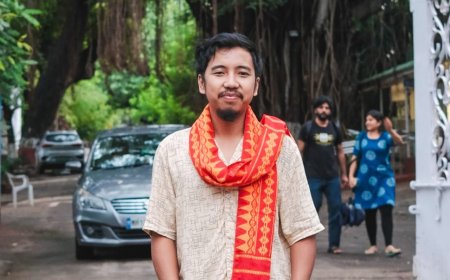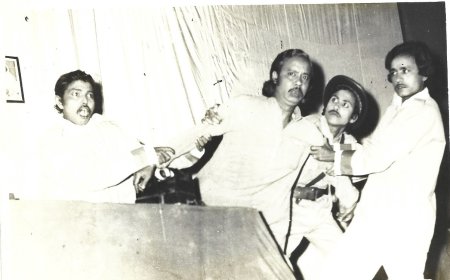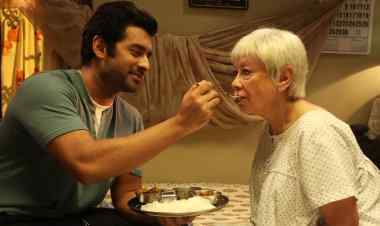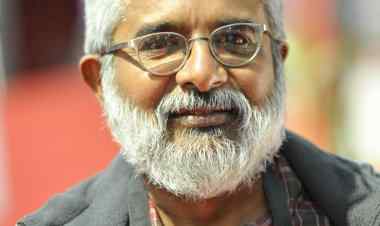JOHN – A VISUAL TRIBUTE TO THE BRILLIANT FILMMAKER JOHN ABRAHAM BY PREM CHAND
Dr. Shoma A.Chatterji interviews the film critic turned filmmaker Prem Chand on his brilliant documentary, John.
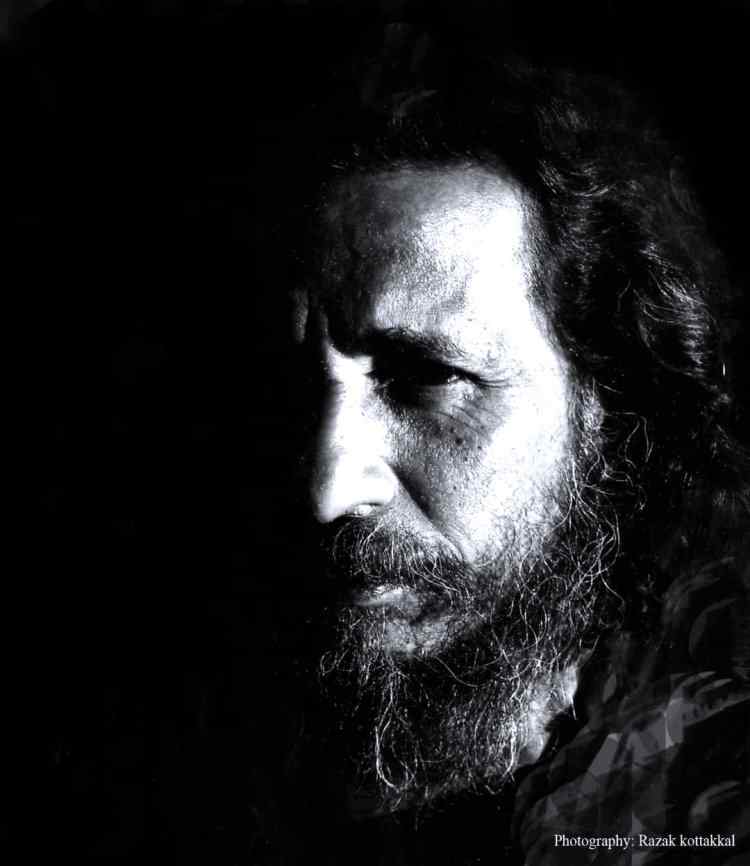
Film analyst, filmmaker and critic Prem Chand has made a beautiful film on the late director John Abraham of Kerala who had a rather early death in a tragic accident. The feature-length film John, defies any category definition because it straddles the paths of documentary, fiction, surrealism and an ode to Nature much like the life, struggles and dreams of John himself. Prem Chand worked at the editorial desk of the leading newspaper Mathrubhumi for over 35 years. He has authored five books including a novel. He has been a committed film society activist since the 1980s and served in Dialogue and Vajra Film Society as Secretary. He was also a member of the Society for Socialist Studies and the Antonio Gramsci Institute (1981-85) Since 2001, has been a member of the International Film Critics Association (FIPRESCI) and has been a FIPRESCI Jury at Bangalore, Thiruvananthapuram and Busan International Film Festivals. The script is written by Prem Chand’s wife, academician Didi Damodaran and his daughter Muktha produced the film along with the Kerala Film Development Corporation.
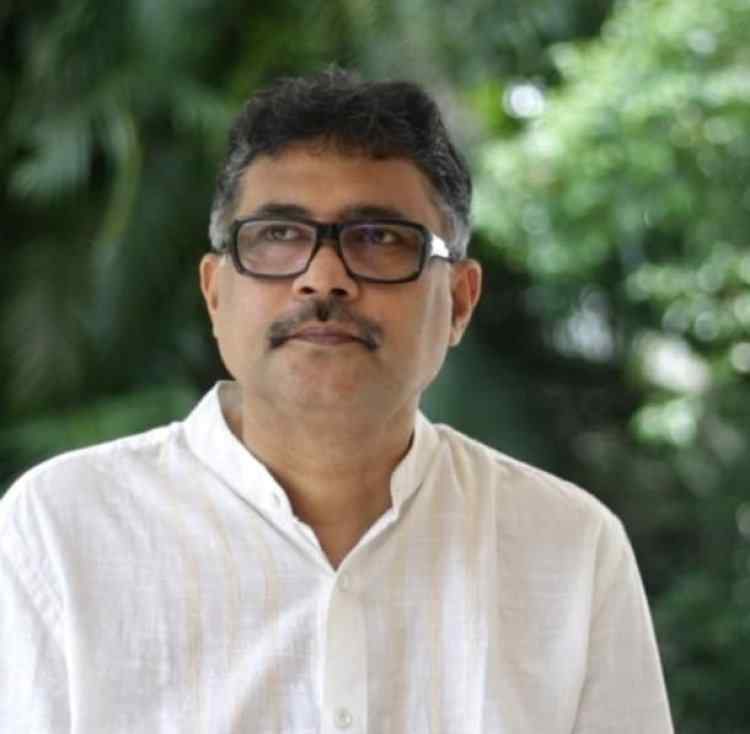
Image: Prem Chand
The film probes into John’s life through kindled memoirs of his comrades working both on and behind the screen such as Ramachandran Mokeri, Harinarayanan, Madhu Master, A. Nandhakumar, his sister Shantha, Shobheendran master, Chelavoor Venu, Jeevan Thomas, Shuhaib, Deepak Narayanan, Arun Punalur, Rajagopal, Prakash Bare, and several others. In this interview, Prem Chand talks freely on his film.
In 1986, John Abraham used an unconventional route to drum up funds for what would turn out to be his final production. John Abraham made the film Amma Ariyan (Report to Mother) by going with a group from village to village, playing drums, putting up skits and short plays and screening films. They took along a bucket for people to make contributions, which they poured into the production. “People could contribute anything from Re 1 to Rs 500,” and thus was made one of the first crowd-funded films in India. He made what he called people’s cinema. Everyone was a producer,” says Prem Chand. Amma Ariyan is the only south Indian film in BFI's top 10 Indian films, one of the first crowd funded films in Malayalam language and the last film by the legendary director John Abraham, “Amma Ariyan” is a landmark in Malayalam and Indian cinema. Leading a radical life, the director also tries to include his radicalism into his films. The mixture of fiction, documentary and self aware cinema works brilliantly like never before.
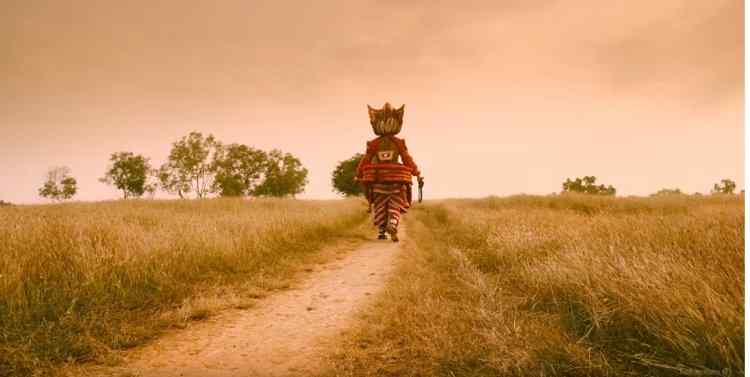 Z
Z
What was the inspiration?
John Abraham's Odessa movement showed the world that cinema was possible with crowd funding rejecting the capital that made cinema impossible. Being part of that movement, I earnestly felt the spirit should continue. Through JOHN, I was trying to do pay my tribute to John Abraham in a humble way.
Since it appears you knew him personally, how would you describe him as a man, a creative artist and a director?
John was the hero of the post-Emergency campus, whose Bohemian lifestyle defied all forms of authority. John's anarchism was against capital and power. He always inspired the youth to stand together and fight against it.
What brief did you give to your music director?
John Abraham needed no introduction to anyone of our generation. So it was easily communicated to Srivatsan J Menon, a vocalist and musician trained in classical music. We did our sittings both pre and post shooting. The only suggestion given was that we need music that combines sound and silence since John Abraham was held invisible in JOHN but his presence was to pervade in the movie and has to be felt.
You call your film a visual tribute to John while I would like to define it as an impressionistic, philosophical tribute. What is your take on the film and its subject - JOHN?
Any reading is Rashamon-like. Truth has multiple shades. I knew John Abraham both on a personal and political front. It was difficult to separate one from the other. My attempt was to translate it on screen.
You have used clips from films he has made and also reconstructed scenes from his films. Why?
John Abraham was a popular director unfortunately celebrated for the wrong reasons. Today he is remembered for his anarchy rather than for his films. Hence the scenes and recreation of scenes were juxtaposed as an invitation to his films. The aim was to remind how important the politics of memory is in a time of collective oblivion.
How long did it take you to make the film from conception to final print?
JOHN was completed in ten years’ time. Deedi Damodaran, my partner, completed the script in 2013. But none of the established producers were willing to support such an art house film which would not be profitable if invested. Then I had to approach Kerala State Film Development Corporation. With the aid of their package my daughter Muktha funded the film. The shooting was completed in 2018. But then the flood and Covid stopped the movie. Meanwhile, four actors who played lead roles passed away - Harinarayanan, Madhumaster, Nandakumar and Ramachandran Mokeri. That made any mending work on sync sound through dubbing impossible. We started in 2013 and the film was censored in 2022. The movie hit theaters on May 31, 2023, John Abraham's 36th Remembrance Day.
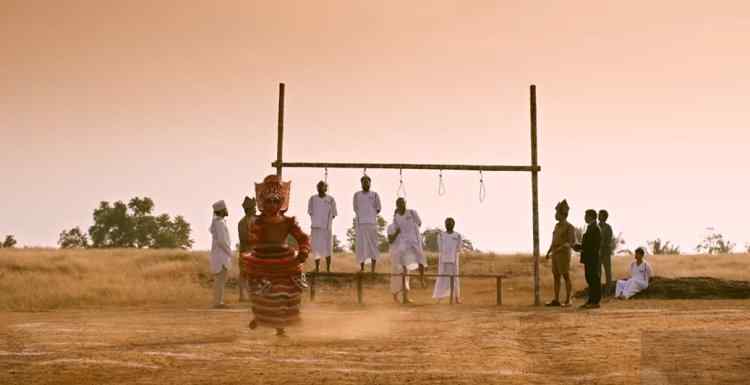
Which locations did you shoot in?
The shooting locations were in Kozhikode, Ernamkulam and Kottayam (Kuttanad).
You have used theatre, rehearsals, actually reconstructed scenes from some films such as the execution of the revolutionaries while shooting in the film and even circus while comparing filmmaking with a circus, one slip and you are gone. Please explain.
John Abraham was also a playwright. Naikkali is a famous street play. Execution of the revolutionary scene is in memory of John Abraham's dream project Kayiyur which did not happen though it had many script versions. Fellini said that cinema is like a circus. John's life was like a trapeze act in a circus. John falling to his death from an unfinished building is a sign of life as a circus.
What does the heavily decked in Theyyam dancer referred to as "God" stand for in this scene who metaphorically 'dies' at the end of the scene?
Theyyam is a famous Indian dance form performed in Kolathunadu (Kingdom of Cannanore) in North Kerala. It encompasses dance, mime and music. It is a ceremonial dance along with music played with instruments like Chenda, Elathalam, Kurumkuzal and Veekkuchenda. The man who binds Theyyam becomes God and authority. Power scares people. The sleep of deified power is the end of all revolution. The history of all revolutions recalls this evolution.
In some places, it appears that John is having a dialogue with his father, both dead and lying beside each other in the grave. In some other places, others are narrating their experiences and interactions with John and describing various facets in detail. Am I right?
The film is a conversation between John and his father, who was buried in his father's grave. During that conversation, John hears the screams on Earth. He leaves the grave and visits his friends on earth. Returning to the grave to discover that the living have not died as long as they have in their memories.
You have used Nature in all its splendour at length - the open skies, the ocean with storks lined on the shores, John playing on the percussion with a friend on the beach, boats sailing in the distance, kites and birds flying across the sky, the branches of the banyan tree offering shade to the people sitting below and so on. Why?
Human-centered development is the cause of all floods. Flood destroys everything built by humans. The flood is a reminder that man cannot survive without protecting nature.
What is your directorial statement on the film?
Liberation from the clutches of capital is possible for cinema. Humans standing together is the only way to survive. John Abraham had been a torch bearer of this realisation.
****
What's Your Reaction?




































